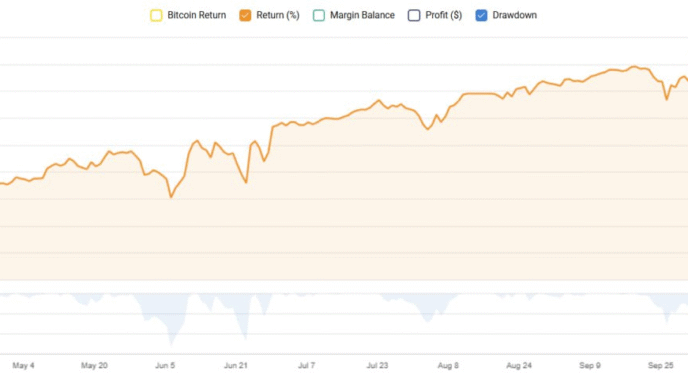Starting in 2026, California employers need to pay closer attention to the details when they have to issue WARN notices. Governor Newsom signed a new law, SB 617, that adds some extra requirements to the notices. It’s not a huge change, but it’s important to get it right to avoid any trouble. This means updating those old notice templates and making sure you’re providing all the new information. The goal is to give employees more resources as they face a layoff or relocation. Let’s break down what you need to know about these updated warn notices california requirements.
Key Takeaways
- Starting January 1, 2026, California employers must include more details in their WARN notices for mass layoffs or relocations.
- New requirements include stating whether employers will coordinate services with local workforce boards and providing information on CalFresh food assistance.
- Employers need to include specific contact information for local workforce development boards and a statement about available job search assistance.
- If coordination of services is planned, it must be arranged within 30 days of issuing the notice.
- Updating existing WARN notice templates is recommended to ensure compliance and avoid potential legal issues.
Understanding The New California WARN Act Requirements

So, Governor Newsom signed a new bill, SB 617, and it’s changing things up for the California WARN Act starting January 1, 2026. Basically, if you’re an employer and you have to do a mass layoff, close a plant, or move your operations, you’ve got some new stuff to put in your official notice. It’s not just about telling people you’re letting them go anymore; it’s about providing more details to help them out.
Key Changes Effective January 1, 2026
Starting in the new year, the big deal is that your WARN notice needs to be more informative. You’ll have to state clearly whether you plan to work with any local groups, like the workforce development board, to help your employees find new jobs. This is a pretty significant shift, aiming to make sure folks aren’t just left in the dark. It also means you’ll need to include specific contact details for the relevant local workforce board and a required statement about the services they offer. Think of it as a heads-up for employees about where they can turn for help.
Impact of Senate Bill 617 on WARN Notices
This bill, SB 617, really beefs up what needs to be in a WARN notice. It’s not just a minor tweak; it adds new disclosure requirements. Employers now have to be explicit about their intentions regarding service coordination. This could mean stating you’ll work with a local workforce development board, another organization, or even that you won’t be coordinating with anyone. This clarity is meant to help employees understand the support structure, or lack thereof, available to them during a layoff. It’s a move towards greater transparency in these difficult situations.
New Disclosure Mandates for Employers
What does this mean for employers? Well, you’ll need to update your WARN notice templates. The new mandates require you to include specific details about coordination plans and contact information for workforce development boards. You also have to mention CalFresh, California’s food assistance program, and provide a description of it, along with its helpline and website. It’s a lot more information than before, and getting it wrong could lead to legal trouble. So, paying attention to these new requirements is pretty important to avoid potential legal issues.
Expanded Information Required in WARN Notices
So, starting January 1, 2026, the state of California is making employers step up their game when it comes to WARN notices. It’s not just about saying a layoff is coming anymore; they need to give more details. This is a pretty big shift, and employers really need to pay attention to avoid any headaches later on.
Inclusion of Workforce Development Board Coordination
One of the new things employers have to do is state whether they plan to work with the local workforce development board (LWDB) or some other group to help out the employees who are losing their jobs. They have to be clear about this in the notice. It’s like saying, "We’re going to help coordinate services," or "We’re not coordinating services with anyone." If they are planning to coordinate, they actually have to set up those services within 30 days of sending out the notice. That’s a tight turnaround, so planning ahead is key.
Details on CalFresh Food Assistance Program
This is a new one: employers now have to include information about CalFresh, which is California’s food assistance program. They need to give a brief description of what CalFresh is, provide the helpline number for it, and include a link to its website. The idea here is to make sure that workers who are suddenly out of a job know about this resource right away. It’s a way to offer a bit of a safety net.
Employer Contact Information Requirements
It might sound simple, but employers now have to explicitly include their own functioning email and phone number in the WARN notice. This is for employees and agencies to be able to reach out with questions. It’s a small detail, but if it’s missing, it could cause compliance problems. So, double-checking that contact info is included is a must.
Coordination of Services Under Cal-WARN
So, what’s this all about? Starting January 1, 2026, if you’re an employer in California planning a mass layoff, relocation, or termination, you’ve got some new hoops to jump through with your WARN notices. It’s not just about telling people you’re letting them go anymore; you also need to be clear about how you’re going to help them out.
Timelines for Arranging Services
If you decide you are going to work with a local workforce development board or some other group to help your soon-to-be-former employees, you’ve got to get that sorted out pretty quickly. You need to arrange these services within 30 days from the date you send out the written notice. That’s not a ton of time, so you’ll want to have a plan in place before you even send the notice.
Stating Intent to Coordinate or Not Coordinate
This is a big one. Your WARN notice now has to clearly state what you’re doing regarding services. You have a few options:
- You plan to coordinate services through the local workforce development board.
- You plan to coordinate services through a different entity (not the local board).
- You do not plan to coordinate services with any entity at all.
Whatever you choose, you have to put it in writing. No ambiguity allowed here.
Information on Rapid Response Activities
Even if you’re not coordinating services yourself, you still need to provide some info. Your notice must include:
- The email and phone number for the local workforce development board.
- A specific statement about the help available: "Local Workforce Development Boards and their partners help laid off workers find new jobs. Visit an America’s Job Center of California location near you. You can get help with your resume, practice interviewing, search for jobs, and more. You can also learn about training programs to help start a new career."
This is basically a heads-up to employees about resources they can tap into, whether you’re involved or not.
Specific Content for Cal-WARN Notifications
Mandatory Statement on Workforce Services
Starting January 1, 2026, your Cal-WARN notice needs to include a specific statement about the help available through local workforce development boards. It’s not just a suggestion anymore; it’s a requirement. This statement basically tells employees that these boards and their partners are there to help them find new jobs. It’ll direct them to visit an America’s Job Center of California location. There, they can get help with things like polishing up their resume, practicing interview skills, and searching for job openings. Plus, they can find out about training programs that could lead to a whole new career path. This is a big change, making sure employees know where to turn for support.
Description of CalFresh Benefits
Another new piece of the puzzle is information about CalFresh, California’s food assistance program. So, what exactly needs to be in the notice? You’ll have to include a brief description of what CalFresh is all about. Think of it as a quick rundown of the program. You also need to provide the CalFresh benefits helpline number – that’s the phone number people can call if they have questions or want to apply. And finally, you’ve got to include a link to the CalFresh website. The idea here is to make sure folks who are losing their jobs know about this public assistance resource during their transition.
Contact Information for Local Workforce Boards
Beyond the general statement about services, you’ll also need to provide concrete contact details for the relevant local workforce development board. This means including a functioning email address and a phone number for that specific board. It’s about making it easy for employees and agencies to get in touch. If you’re planning to coordinate services with the local workforce board or another group, you’ll need to state that in the notice. If you’re not planning to coordinate services with anyone, you have to say that too. It’s all about clear communication and making sure everyone knows the plan, or lack thereof, for connecting employees with support.
Employer Responsibilities and Compliance
So, the big day is January 1, 2026, and California’s WARN Act is getting a makeover, thanks to Senate Bill 617. This isn’t just a minor tweak; it means employers need to get their ducks in a row and update how they handle mass layoffs, relocations, or terminations. Failing to get this right could lead to some serious headaches, including back-pay liabilities and civil penalties.
Updating WARN Notice Templates
First things first, you’ll need to update those WARN notice templates you’ve been using. The old ones just won’t cut it anymore. Starting in 2026, your notices have to include a bunch of new information. Think details about CalFresh food assistance programs, and clear statements about whether you’ll be coordinating services with local workforce development boards or other entities. You also need to provide a functioning email and phone number for your company, so people can actually reach you with questions. It seems simple, but it’s a new requirement, and you don’t want to mess it up.
Avoiding Potential Legal Issues
To steer clear of trouble, make sure your updated notices are super clear. This includes:
- Stating your intent regarding service coordination: You have to explicitly say if you plan to work with a local workforce development board, a different group, or no one at all. This needs to be in writing.
- Including specific CalFresh information: A description of the CalFresh program, its helpline number, and a link to its website are now mandatory.
- Providing contact details for local workforce boards: Even if you’re not coordinating services through them, you still need to include their contact info and a blurb about the help they offer, like resume assistance and job searching.
Ensuring Compliance with New Regulations
If you decide to coordinate services, remember that these services need to be arranged within 30 days from when the notice is issued. This means you can’t just wait until the last minute to figure things out. You’ll need to identify the right local workforce development board (LWDB) and get those
The Role of Workforce Development Boards

So, what exactly do these Workforce Development Boards (WDBs) do when a company has to do layoffs? It’s actually pretty important stuff. They’re basically there to help folks who’ve lost their jobs get back on their feet. Think of them as a central hub for resources.
Services Offered to Displaced Employees
When a mass layoff happens, the WDBs and their partners step in. They offer a bunch of services designed to help workers find new employment. This isn’t just about pointing people to job boards, though. They can help with:
- Resume writing: Getting your resume polished and ready for today’s job market.
- Interview practice: Helping you nail those interviews with mock sessions and tips.
- Job searching strategies: Showing you effective ways to find openings that fit your skills.
- Training programs: Information on how to get new skills or certifications for a different career path.
The goal is to make the transition as smooth as possible for everyone affected.
America’s Job Center of California Locations
These WDBs operate through a network of America’s Job Center of California (AJCC) locations. You can find one near you. These centers are the physical places where many of these services are provided. They’re equipped with computers for job searching, staff to help you, and often host workshops. It’s a good idea to know where your nearest AJCC is, just in case. You can find out more about them through the local workforce development board information that employers will be required to provide.
Assistance with Resumes and Job Searching
As mentioned, a big part of what the WDBs do is practical job-seeking help. They understand that losing a job can be disorienting, and not everyone knows how to effectively search for a new one in the current climate. They provide guidance on everything from crafting a compelling resume to networking effectively. They also connect people with potential employers and training opportunities. It’s all about getting people back to work faster.
Wrapping Up: What Employers Need to Know
So, starting January 1, 2026, California employers need to pay a bit more attention to their WARN notices. It’s not a huge overhaul, but there are some new details to include. You’ll have to mention if you’re working with local workforce groups and add info about CalFresh, the state’s food assistance program. It’s really about making sure employees have all the resources they need when facing a layoff or closure. Just a heads-up, it’s always a good idea to check your notice templates to make sure they’re up to date with these changes. Staying on top of this stuff helps avoid any headaches down the road.
Frequently Asked Questions
What is the California WARN Act and when do the new rules start?
The California WARN Act, also known as Cal-WARN, is a law that requires certain employers to give advance notice before they conduct big layoffs, close a location, or move their business. These new rules will become official on January 1, 2026.
What new information do employers need to include in their notices?
Starting in 2026, employers must tell employees if they plan to work with local job centers or other groups to help laid-off workers. They also have to include details about CalFresh, which is California’s food assistance program, and provide contact information for local workforce boards.
Why is CalFresh information being added to the notices?
The goal is to make sure that workers who are losing their jobs know about the help available to them. CalFresh is a program that helps people buy food, and including this information helps employees access important resources during a difficult time.
What does ‘coordination of services’ mean in these notices?
It means whether the company will work with groups like the local workforce development board to offer help to affected employees. This help can include things like resume writing, interview practice, and job searching assistance. Employers need to state if they will coordinate these services or not.
How soon do employers need to arrange these services if they choose to coordinate?
If an employer decides to work with a local workforce development board or another group to provide services, they must set up these arrangements within 30 days after sending out the official notice.
What happens if employers don’t follow these new rules?
Not following the Cal-WARN rules, including the new requirements, can lead to problems for employers. They might have to pay employees for the time they weren’t properly notified and could face other penalties. It’s important for businesses to update their notice procedures.














